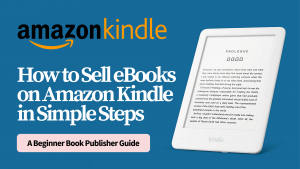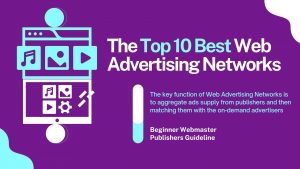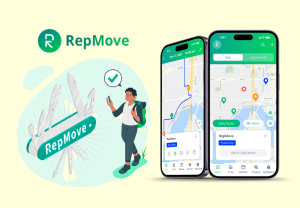Did you know that there are Organic Marketing Components that can help empower your online marketing strategy? In the ultra-modern digital age, online advertising has become an integral device for organizations to efficiently reach and interact with their target audience. Natural advertising is a fee-efficient and sustainable approach to building an emblem for online visibility.
It also helps empower credibility and lengthy-term growth. Unlike paid search advertising, organic marketing uses various channels and techniques to naturally attract and retain customers without hefty monetary investments. For example 1994, Hotmail had zero sign-ups—however, that number rose to a whopping 30 million in two and a half years. But how did this happen?
To enumerate, they attached a URL link to their website at the bottom of all emails sent with their service. So that whenever someone sent an email to a friend, colleague, or family member, they were unknowingly engaging in word-of-mouth marketing, a.k.a. organic marketing. Perse, recipients could click the link at the bottom to sign up and continue the cycle in their social circle.
As you can see, this is a basic illustration of organic marketing. Still, it demonstrates the potential outcome of a well-executed organic marketing campaign. With that in mind, in this article, we will explore the fundamental components of organic marketing, shedding light on how businesses can harness its potential to elevate their online presence and maximize their success.
Understanding Why Organic Marketing Components Generally Matters
Organic Marketing Components, also known as inbound marketing features, revolve around attracting potential customers through valuable and relevant content rather than forcefully pushing advertising messages. The foundations of organic marketing lie in establishing meaningful connections with the target audience and engaging them with compelling creative content narratives.
It also includes fostering loyalty through authenticity and trustworthiness. By doing so, businesses create sustainable relationships with their customers and generate qualified leads over time. In other words, organic marketing is marketing strategies you don’t spend directly on to amplify. This includes social media posts, blog posts, Facebook updates, and LinkedIn articles.
Today’s consumers are ad-averse. That’s due to many years of exposure to over-the-top advertisements that either overstate facts or lie outright. People now hate the feeling of being sold. It’s the same thing online. According to Hubspot, 91% of online users feel that ads are intrusive. This explains why 53% of website traffic comes from organic search and only 15% from paid search.
However, it’s essential to realize that although you don’t pay directly to amplify organic content, there are still indirect costs. In particular, some of the expenses you’ll spend on tools and hiring writers, and devote time and resources to researching and writing. As such, this is where the organic marketing components come in handy—they can help you or your marketers uniquely.
This is how they help businesses:
- Attracts the attention of your prospects by offering helpful information that solves their problems
- Holds readers’ attention, builds credibility, and keeps you top of mind until they’re ready to purchase
- Turns prospects into loyal customers who can advertise your product to others.
- Creates permanent sources of traffic to your website.
However, the truth here is that it takes a while to yield results. But once it does, it becomes a gift that keeps on giving. For instance, an article you write today continues to generate traffic for years, albeit with few updates. And a social media update you put up today continues to pull in traffic endlessly. Again, the most significant advantage of organic marketing components is believability.
The Topmost Best Organic Marketing Components For Business Marketers
Most organic marketing components are driven by a successful strategy based on consistency, quality, and empathy. For instance, to succeed with organic marketing, you must continuously post articles or share social updates. You can’t show up once in a new moon and expect results. This is because the effects of organic marketing provide increased brand reputation awareness.
In addition, some organic marketing components that help drive customer loyalty, higher rankings on the Search Engine Results Page (SERP) for Google, Bing, Yahoo, DuckDuckGo, or Yandex, and credibility—are borne out of a relationship. And in the same way a relationship begins after several dates, your brand audience’s relationship requires multiple interactions with your content.
As you can see from the illustration above, it’s about a new report (download the full report) by HubSpot, Litmus, Rock Content, and Wistia to help marketers prioritize their strategies and outperform their goals. Data from over 1,200 marketers across the globe. Insights and predictions on everything from AI and automation to the rise of TikTok and other emerging platforms.
In layman’s language, some organic marketing components can’t be executed in a vacuum. As such, you need a well-designed action plan to guide you to achieving the goals you have in mind. That’s the role of a strategic organic marketing plan, anyways. So, gear up! And let’s get to the steps of utilizing the topmost organic marketing components in your business marketing plan.
1. Strategic Content Planning As The Core Pillar
At the heart of organic marketing lies an effective content strategy. Sometimes, relevant and high-quality content may serve as a magnet that draws in potential customers organically. To achieve this, businesses must produce informative blog posts, engaging social media updates, captivating videos, and other content tailored to their target audience’s interests and pain points.
Content serves multiple purposes: educating, entertaining, inspiring, and solving problems. When businesses consistently deliver value through their content, they position themselves as industry authorities and foster trust among their audience, ultimately driving customer loyalty and advocacy. As mentioned, it’s great to show up consistently, but it’s even better to post quality blogs always.
As a result, it helps positively portray your brand to your target audience. The definition of “quality content” is dependent on your ideal audience. Writing in a quirky manner might be okay for a young audience. But you can’t do the same when blogging for a C-suite audience. So, know your audience first. Then, you can define “quality content” to help win your potential audience.
On that note, consistency may mean posting twice a day for someone, once for another person, or once a week for someone else. Usually, it all depends on your industry, audience, and what your competitors are doing. For instance, some companies may post every hour and publish an article daily—posting once daily and publishing 2-4 articles monthly can be sufficient for a SaaS.
2. Evaluating Your Current Website Traffic Source
At all costs, organic marketing aims to attract your ideal audience. So, you must discover the best way to reach them. And what better way to do that than to engage them on the platforms they frequent? But how do you find the platforms they frequent? Start with your website and analyze the sources of your organic traffic. Ask yourself: Which of them pools the most traffic?
Is it your custom landing page, email newsletter, social media pages, or Youtube channel? Webmasters can use website analytics tools such as Matomo, Ahrefs, Google Analytics 4, Tiny Analytics, Semrush, Moz, etc. For instance, click ”reports” in the left-hand corner with Google Search. Then click “acquisition” and select “overview” from the drop-down (to get something like this):
Remember, analyzing your website is a crucial step that you should not ignore. If you study your website regularly, you can know which parts need to be improved accordingly. And then, after that, you can create content for the sources of traffic you have identified. Additionally, it would be best to discover how they find content like yours. Perhaps it’s from influencers or industry blogs.
3. Creative Content Writing As The Marking Scheme
Of course, after you are done tracking your website performance results (by organic traffic sources), the next thing is to start creating content such as videos, articles, infographics, white papers, case studies, and many more. However, designing a growth model and marketing strategy would be best before creating content—a content growth model that predicts the best results.
Such as how much organic traffic will result from investing in content. And a content marketing strategy provides a roadmap for achieving growth via content. Also, you can either write the content yourself or sublet it to freelancers. If you’re subletting, create a well-researched SEO content brief. It eliminates multiple rounds of editing and gives a complete picture of what you want.
Likewise, whatever content you create should be timeless (evergreen content), of high quality, result-driven, unique, and scanned through a free plagiarism checker or a similar application platform. This will ensure the content’s uniqueness and helps you to use 100% original text for your organic marketing. So, you will attract and hold your ideal audience’s attention.
There are a few questions to help in your plan.
- Did you publish a blog recently or have a podcast feature coming up? Post about it on your social media page.
- Do you have a long-form article? Repurpose the subsections into posts on social media.
That way, you’ll drive more traffic to your website. But before posting on social media platforms, choose a channel your ideal audience frequents. For instance, LinkedIn or Twitter would be perfect for a B2B company because most business leaders frequent them. Also, choose a content format that matches the platform. You don’t want your posts to stand out from other posts.
If it’s an Instagram post, make it visual. Discover when your audience is most active, then blog post within that period. For example, posting during work hours when your target audience is primarily workers is ill-advised.
4. Search Engine Optimization As The Ranking Tool
For beginner business marketers, as mentioned, (SEO) Search Engine Optimization refers to strategies that help your website rank high on search engine result pages and social platforms, leading to more organic traffic. And now, as a rule of thumb, organic marketing components cannot fall into place without SEO. That’s why you must optimize your website for all search engines.
So, a vital part of organic advertising is a Search Engine Optimization (SEO) plan for the websites. SEO is optimizing an internet website and its content to rank better in seeking search engine outcomes pages (like Google). It involves strategically using the best keyword research tools to get relevant focus terms throughout the content to improve visibility and increase organic traffic.
By conducting thorough keyword research and integrating them naturally into their content, businesses can attract users actively searching for products or services related to their industry. A balanced keyword density of around 3% ensures the content remains user-friendly and doesn’t appear spammy to search engines. Use your target keywords in the meta description.
Still, utilize alt tags in your content and images while using video descriptions on your YouTube channel and social media posts. On the contrary, avoid keyword stuffing by including focus terms only if they do not disrupt the sentence or paragraph flow.
5. Social Media Marketing As The Voiceless Voice
By all means, a solid social media presence gives wings to your organic content marketing efforts. These days, almost everyone is on social media. It has become the number one channel (above websites) that most web-based business marketers use.
Social media platforms have become powerful channels for organic marketing. With billions of active users, structures like Facebook, TikTok, Snapchat, Instagram, Twitter, LinkedIn, and others provide businesses with a tremendous target audience to connect to. Organizations can build a faithful community of fans and promote phrase-of-mouth advertising through enticing posts.
Coupled with interactive content material and well-timed responses. Remember, empathy fosters an emotional connection between you and your audience. It shows your audience you understand. It shows you care. Also, a study by HBR shows that customers who are fully connected emotionally to a brand are 52% more valuable to a business than those that are not.
To infuse empathy into your efforts;
- Diagnose the pain points of your audience
- Provide valuable and accurate information to solve their problem.
- Don’t just tell readers what to do. Show them how to do it.
To excel in organic Social Media Marketing (SMM), businesses should focus on understanding their audience’s preferences, posting consistent and relevant content, and leveraging storytelling techniques to create a personal connection with their followers. Encouraging user-generated content and running social media contests boost organic reach and engagement.
6. Email Marketing As The Evergreen Connection
Despite the rise of various digital marketing channels, email marketing remains a crucial component of organic marketing. Building and nurturing an email subscriber list allows businesses to maintain a direct and personal connection with their customers. Companies can retain customer interest and drive repeat purchases by delivering valuable content and exclusive offers.
As well as providing personalized recommendations. Equally important, use visuals, infographics, analogies, and examples in your content. It shows that you value their time and are focused on offering help. Likewise, ensure that you “Speak” at your audience’s level. And also, write humanely (not robotic!). Use keywords naturally instead of forcing them into every sentence.
For beginner email marketers, effective email marketing strategies may include segmenting the email subscribers list based on interests and behaviors. And then this may also be coupled with elements such as A/B Testing email content and avoiding excessive promotional content. A well-crafted email campaign can significantly impact customer engagement and brand loyalty.
7. Influencer Marketing For Trust And Authority
Uniquely, it’s worth mentioning that influencer marketing has become a prominent element of organic marketing in recent years. On that note, influencer marketing is when a brand enrolls influencers who have established credibility and an audience on social media platforms. As well as provide a way to discuss or mention the brand in a blogging website or social media post.
For your information, influencer marketing was built on the foundation of The Four P’s: Product, Price, Promotion, and Place. In today’s B2B market, however, the famous Four P’s have been joined by The Four M’s, which map out the basic steps in reaching influencers within a business. Influencers help you gain more visibility when such a person recommends your business.
It could be your products or services or even brand mentions, which extend your scope and increases your brand awareness. Thus, collaborating with influencers who align with a brand’s values and target audience can lead to authentic endorsements and increased brand awareness. Still, with their dedicated fan base, influencers offer a valuable opportunity for digital businesses.
Precisely, they can tap into a new audience segment with various complimentary help and gain credibility through association. When pursuing influencer partnerships, businesses should prioritize authenticity overreach. Engaging micro-influencers with a smaller but more engaged following often yields better results as their audience trusts their opinions and recommendations.
8. Continue Testing, Tracking, And Analyzing Performance
The basic rule here is to try and lower your page load time. Remember, the lower your page loads, the higher your website ranks on SERPs. So, using the right image SEO strategy, utilize small-sized images (not greater than 200kb), minify CSS, Javascript, and HTML, and enable browser caching. The other rule is to optimize your website for mobile device users (AMP-Ready).
This means that your website must be responsive enough on all computing devices. Statista says mobile devices have accounted for over half of the web traffic since 2020. And according to Comscore, 69% of media users’ time occurs on smartphones. For these reasons, Google’s algorithm uses content from the mobile version of your website when indexing.
And if the mobile version is poor, you’d be ranked low. So, make your website mobile-compliant—ensure your customized Call To Action (CTA) buttons are clickable. Discard text-blocking ads or pop-ups. And don’t overcomplicate your web design. Mind you; you can’t improve what you don’t measure. Besides, how else will you know if a strategy works if you don’t measure it?
That’s the same with organic marketing. You must consistently measure your organic marketing efforts across various channels. Then use the data you get to make improvements. First, decide on your goals: Conversions? Downloads? Or just traffic? Then choose a metric that’s related to the plan. There are various examples of such website metrics to track, test, analyze, and monitor.
They include:
- specific user dwell time
- social media engagement
- contextual items download
- website traffic generated
- social media post shares
- target lead conversions
- the overall bounce rate
You can use data tools like Google Search Console to measure the metrics. Alternatively, you might rely on the built-in analytics dashboard of the social platform. Remember that measuring is to make changes and find ways to improve what is already working.
Exploring Inorganic Marketing As The Alternative Paid Advertising Tool
Technically, regarding the autonomous realms of digital marketing, agencies appoint numerous strategies to promote their services or products and connect to their audience. Inorganic marketing, often called outbound marketing, entails procedures that depend on paid promotions to attain potential clients. It’s unlike natural advertising, which focuses on attracting audiences.
Primarily, natural marketing is often through valuable content material and engagement. Instead, inorganic advertising leverages the best digital online marketing strategies to advantage visibility and pressure immediate effects. In this section, we can delve into an instance of inorganic advertising and digital online marketing, highlighting its traits, advantages, and drawbacks.
Inorganic advertising components and traditional marketing techniques encompass all promotional sports that require economic funding to deliver a message to a selected target audience. Those strategies involve interruptive advertising techniques (including display ad commercials, pop-up advertisements, banner advertisements, and paid seek results), which might be strategic.
This means they may be strategically located on websites, social media systems, search engines, and other virtual channels. Inorganic advertising aims to expose a brand to a massive target audience quickly and frequently without spending extensive time or effort to generate leads and conversions. One instance is the pay-according-to-click on (percent) advertising.
It’s the most commonplace example of inorganic advertising and marketing. To enumerate, pay-in-line with-click (%) advertising. p.c is a digital advertising and marketing model in which advertisers pay the price every occasion one of their ads is clicked. Its miles are generally utilized in search engine advertising, social media advertising, and show advertising.
Search Engine PPC Advertising
In seek engine p.c advertising, corporations bid on key phrases relevant to their services or products. While a user searches for the usage of those key phrases, the hunt engine shows backed advertisements on the top or bottom of the quest consequences page. Those advertisements are categorized as “adverts” to distinguish them from organic search consequences.
For example, if a user searches for “best smartphones,” the search engine may display PPC ads from various smartphone manufacturers or retailers. The advertiser only pays when the user clicks on their ad, directing them to the advertiser’s landing page.
Pros:
- Instant Visibility: PPC ads can appear at the top of search results, ensuring immediate exposure to a highly targeted audience.
- Measurable Results: Advertisers can track the performance of their campaigns, including Clickthrough Rate (CTR), Return On Investment (ROI), and other conversion rates.
- Controlled Budget: Advertisers can set a daily or monthly budget to manage their spending effectively.
Cons:
- Investment Cost: Depending on the competition for keywords, PPC advertising can be expensive, especially for highly sought-after keywords.
- Temporary Impact: Once the ad budget is exhausted or the campaign ends, the visibility and traffic generated from PPC ads cease.
Social Media PPC Advertising
Social media platforms like Facebook, Instagram, Twitter, and LinkedIn offer PPC advertising options to Social media structures like Facebook, Instagram, Twitter, and LinkedIn offer percent advertising alternatives to companies. Those systems allow advertisers to target precise demographics, hobbies, behaviors, and locations for their ads to attain the maximum lead audience.
For instance, an e-commerce garb emblem can create a percent advert on Instagram and goal customers elderly 18-35 interested in style. When users within the target audience scroll through their Instagram feed, they may see the sponsored ad.
Advantages:
- Granular targeting: Advertisers can narrow down their audience based on various criteria, ensuring their ads are seen by users most likely to be interested in their offerings.
- Engaging ad formats: Social media platforms offer visually appealing and interactive ad formats, increasing the likelihood of user engagement.
Disadvantages:
- Ad Fatigue: If not managed properly, users may become fatigued by seeing the same ads repeatedly, leading to reduced effectiveness.
- Ad Blockers: Some users employ adblocking strategies, which can limit the reach of social media PPC ads.
Banners Display Advertising
Display advertising involves placing visual ads on websites and other digital platforms. These ads come in various codecs, including banners, interstitials, video adverts, and pop advertisements. Display commercials can appear on websites related to the advertiser’s enterprise or structures that shape the ad’s targeting criteria.
For instance, a travel agency may use display ads to promote vacation packages on travel-related websites. Users visiting these websites may encounter display ads showcasing enticing holiday destinations.
Benefits:
- Comprehensive Outreach: Display ads can reach a broad audience, increasing brand exposure and awareness.
- Enhanced Creativity: Display ads offer creative freedom to design visually appealing and engaging advertisements.
Drawbacks:
- Ad Blindness: Users may become accustomed to ignoring display ads due to their prevalence on websites, reducing their effectiveness.
- Limited Control: Advertisers may not wholly control where their display ads appear, which can impact their brand’s association.
So, should you use organic marketing components or paid web advertising networks in your strategic web-based business plan? Of course, the answer here is utilizing both methods in your business marketing purposes mix—because they work in tandem.
You could, for example, use organic content marketing to attract visitors to your site, then retarget them later using paid ads related to the content they interacted with. Also, while organic marketing mainly engages current customers and guides them toward a purchase decision, a paid marketing campaign gets your brand in front of people who don’t know about you yet.
Using Organic Marketing Components Vs. Paid Advertising Channels
Eventually, the ultimate goal is to generate traffic with organic marketing components. Remember, business sales marketing is mostly a numbers game: you have a better chance of getting sales when you create more traffic. In that case, an effective organic marketing campaign is cost-efficient to attract traffic to your website, engage them, and nurture them into customers.
Inorganic marketing, exemplified by Pay-Per-Click (PPC) advertising, represents a prominent example of outbound marketing strategies. Businesses can gain instant visibility and connect with a targeted audience by leveraging PPC advertising on search engines and social media platforms. While inorganic marketing offers immediate results and measurable outcomes, it also has cons.
There are drawbacks, such as cost implications and temporary impact. A successful marketing strategy often involves a balanced approach, combining both organic and inorganic methods to maximize the benefits of each. By understanding the characteristics of inorganic marketing and its example of PPC advertising, businesses can make informed decisions much faster.
They can also create comprehensive marketing campaigns that effectively promote their products or services in the digital landscape. Start talking to different customer segments with personalized content in minutes. To do so, please Consult Us so that our professional business marketing experts can create a custom plan to help drive organic traffic and sales results.









